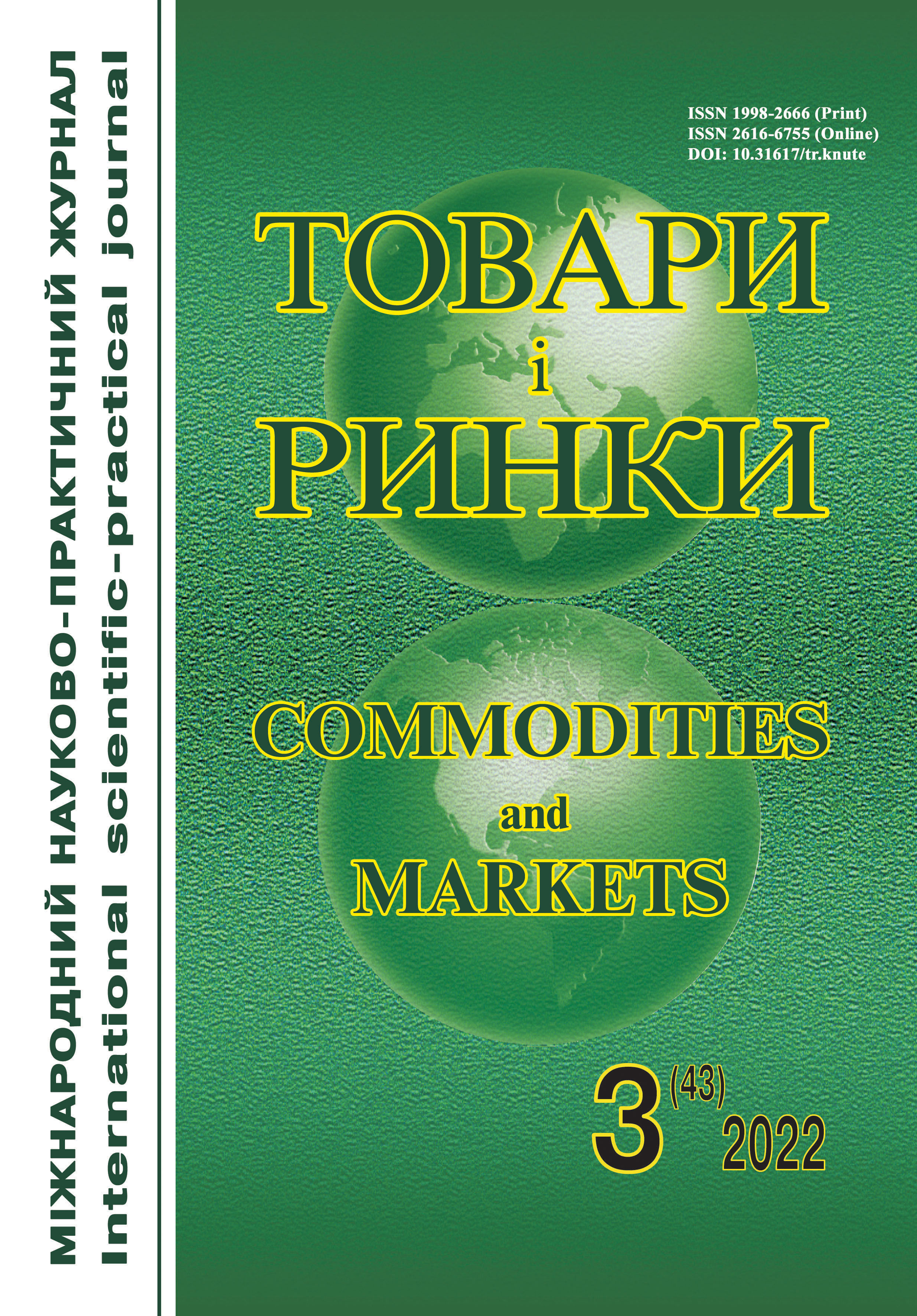Safety and quality of sorghum-based beverages
DOI:
https://doi.org/10.31617/2.2022(43)08Keywords:
sugar sorghum juice, wort, microorganisms, juice soft drink, safe intermediate productAbstract
Introduction. Nowadays, the conditions for the existence of food enterprises are determined by the presence of an effective safety and quality management system. According to the principles of HACCP, the analysis of dangerous factors must be carried out both for raw materials and semi-finished products, in order to identify possible risks of obtaining non-compliant products.
Problem. The use of sugar sorghum juice (SSJ) in the production of soft beverages as the basis of the product formulation will allow you to obtain a high-quality juice drink enriched with biologically active substances.
The aim of the article is to analyze the safety and quality of wort based on SSJ as a semi-product, to establish the parameters of its pasteurization to obtain safe and high-quality drinks.
Methods. Sugar sorghum of the Favorite variety was used as the research object.
Commonly accepted and standardized research methods were used to determine the physico-chemical and microbiological indicators of the wort based on SSJ and the finished drink.
Results. It has been established that the microbiota of SSJ and wort based on it is mainly represented by mesophilic aerobic and facultatively anaerobic microorganisms, spore-forming bacteria and yeast. At the same time, the juice, wort and finished drink do not contain bacteria of the coliform group (coliforms) and opportunistic microorganisms, in particular coagulase-positive staphylococci. To ensure compliance of wort and the finished soft drink based on it with hygienic requirements regarding the content of microorganisms and preservation of important biologically active substances of derived raw materials in the product, the mode of pasteurization of wort was established: temperature 78 ± 2.0 °С, duration 15–20 min.
Conclusions. The resulting wort based on SSJ can be recommended as a safe intermediate product for the production of both juice and fermented soft drinks.
References
Rampini, G. H., Berssaneti, F. T., & Saut, A. M. (2019). Insertion of Risk Management in Quality Management Systems with the Advent of ISO 9001:2015: Descriptive and Content Analyzes. Industrial Engineering and Operations Management II. (Vol. 281), (pp. 20-35). https://doi.org/10.1007/978-3-030-14973-4_20 [in English].
Kregiel, D. (2015). Health Safety of Soft Drinks: Contents, Containers, and Microorganisms. BioMed Research International. (Vol. 2015). http://dx.doi.org/10.1155/2015/128697 [in English].
Clotteau, M. (2014). Alicyclobacillus spp. Control in the Fruit Juice Industry. Pall Food and Beverage Technical Bulletin. (pp. 1-15) [in English].
Gunchak, T. I. (2014). Osoblyvosti vyroshhuvannja sorgo cukrovogo v jakosti syrovyny dlja vyrobnyctva biopalyva v umovah pivdenno-zahidnogo lisostepu Ukrai’ny [Features of growing sugar sorghum as a raw material for the production of biofuel in the conditions of the southwestern forest-steppe of Ukraine]. Naukovi praci instytutu bioenergetychnyh kul’tur i cukrovyh burjakiv – Scientific works of the Institute of Bioenergy Crops and Sugar Beet. (Issue 21), (pp. 240-244) [in Ukrainian].
Kusjak, G. T., Dumans’ka, Ju. A., Kucherjava, V. A., & Omel’chenko, N. M. (2014). Vykorystannja cukrovogo sorgo jak bioenergetychnoi’ kul’tury pry vyrobnyctvi bioetanolu [The use of sugar sorghum as a bioenergy crop in the production of bioethanol]. Ekologichni problemy tradycijnyh i al’ternatyvnyh vydiv energii’. Gorbunovs’ki chytannja – Environmental problems of traditional and alternative types of energy. Gorbunov’s readings. (pp. 56-58). Chernivci: ChF NTU "HPI" [in Ukrainian].
Fadejeva L. V. (2019). Sorgo s’ogodni i zavtra. Ch. 2. Vykorystannja v harchovyh, kormovyh, tehnichnyh ciljah i osoblyvosti vyroshhuvannja [Sorghum today and tomorrow. Part 2. The use for food, fodder, technical purposes and peculiarities of cultivation]. AgroONE, 7(44), 14-16 [in Ukrainian].
Grygorenko, N. O., Gusjatyns’ka, N. A., Vakuljuk, P. V., & Chibrikov, V. V. (2020). Udoskonalennja tehnologii’ cukrovmisnogo sorgovogo syropu z vykorystannjam membrannyh metodiv [Improving the technology of sugar-containing sorghum syrup using membrane methods]. Naukovi praci Nacional’nogo universytetu harchovyh tehnologij – Scientific works of the National University of Food Technologies. (Vol. 26), 1, (pp. 142-152) [in Ukrainian].
Innovacijni naprjamy rozvytku harchovyh tehnologij [Innovative directions of food technology development]. (2020). N. A. Nagurna (Ed.). Cherkasy: ChDTU [in Ukrainian].
Produkcija bezalkogol’noi’ promyslovosti. Metody vyznachennja suhyh rechovyn [Products of non-alcoholic industry. Methods of determination of dry substances]. (2007). DSTU 4855:2007. Kyi’v: DP "UkrNDNC".
Produkcija bezalkogol’noi’ promyslovosti. Metod vyznachannja kyslotnosti. Zi zminoju № 1 [Products of non-alcoholic industry. Acidity determination method. With change № 1]. (2009). DSTU 7102:2009. Kyi’v: DP "UkrNDNC".
Koroljuk, T. A., Usatjuk, S. I., Kostinova, T. A., & Filipchenko, I. M. (2017). Metody kontrolju harchovyh produktiv [Methods of control of food products]. Kyi’v: NUHT [in Ukrainian].
Karputina, M. V., Hargelija, D. D., Teterina, S. M., Romanova, Z. M., Olijnyk, S. I., & Vitrjak, O. P. (2022). Doslidzhennja mikrobiologichnyh pokaznykiv susla z cukrovogo sorgo ta jabluchnogo koncentratu jak syrovyny u vyrobnyctvi bezpechnyh harchovyh produktiv / Karputina M. V., Khargeliia D. D., Teterina S. M., Romanova Z. M., Oliinyk C. I., Vitriak O. P. The research of microbiological indicators of wort extracted from sweet sorghum and apple concentrate as raw materials in the production of safe foodstuffs. SWorldJournal. (Issue 11). (Part 1), (pp. 31-34). https://doi.org/10.30888/2663-5712.2022-11-01-032 [in Ukrainianin, in English].
Solomon, A. M., Kazmiruk, N. M., & Tuzova, S. D. (2020). Mikrobiologija harchovyh vyrobnyctv [Microbiology of food production]. Vinnycja: RVV VNAU [in Ukrainian].
Karputina, M., Hargelija, D., & Vitrjak, O. (2021). Upravlinnja jakistju v tehnologii’ napoi’v na osnovi cukrovogo sorgo ta vyshnevogo koncentratu [Quality management in beverage technology based on sugar sorghum and cherry concentrate]. Proceedings from: Vseukrai’ns’ka naukovo-praktychna onlajn-konferencija "Jagidnyctvo v Ukrai’ni. Upravlinnja jakistju jagidnyh kul’tur za dopomogoju vprovadzhennja novitnih tehnologij vyroshhuvannja, zbyrannja, pisljazbyral’noi’ dorobky, zberigannja ta pererobky" – All-Ukrainian scientific and practical online conference "Berry growing in Ukraine. Management of the quality of berry crops with the help of the introduction of the latest technologies of growing, harvesting, post-harvest finishing, storage and processing". (pp. 53-55). Kyi’v [in Ukrainian].
Napoi’ bezalkogol’ni. Zagal’ni tehnichni umovy [Soft drinks. General technical conditions]. (2016). DSTU 4069:2016. Kyi’v: DP "UkrNDNC" [in Ukrainian].



